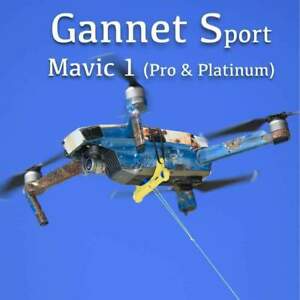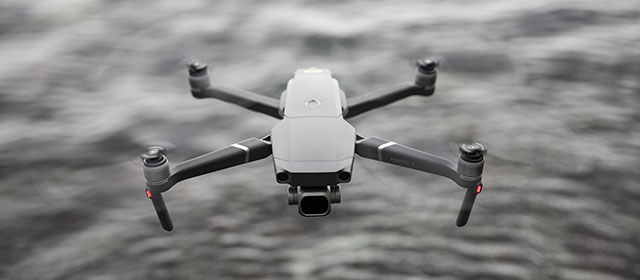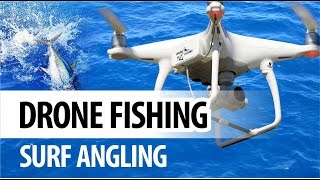
If you are an avid fisherman and live in Australia, you can now use a drone to get an aerial view of the waters around your property. Drones are equipped with many features including a GPS positioning and GPS receiver, a GPS transmitter, a GPS receiver, an angle-adjustable camera, and a mechanical payload. Fishing lines can be purchased that are extremely stable and secure. The SKY RIGGER drone is one such example.
SKY RIGGER, a drone fishing line, is available
The SKY RIGGER flexible fishing line system allows you to fish from the sky with minimum effort. Two rotating leg clamps allow the system to be attached to a variety of drone models. The release mechanism is designed with a bayonet-style connection and a cam-lock arm to open the line clamps quickly. Unlike other drones, the Sky RIGGER requires no batteries and can accommodate all fishing techniques safely.
For when a fish strikes your fly, the SKY RIGGER features an automatic release mechanism. You can also manually let go of the line by using your rod or hand. This feature can be found on all models. It is highly recommended to buy a Phantom 3 first before purchasing the new SKY RIGGER. Here are some pros & cons of the new line.
It can be set up to release a payload mechanically
A drone with a mechanical payload release system is one of the most important aspects. Many of them are designed to allow the angler to release the fishing line with ease. Some models don't have a release mechanism. Instead, to remove the drone from its fishing line, the user must "yank” it. This can be an inconvenient process, especially for people who aren't comfortable using their hands to release the line.

The payload release mechanism is another important feature. The payload should be able to release the drone's line when the fish is struck. It is important to practice catch and release fishing before trying this method, as you can't simply pull the fish to shore and release it back into the water. Many have had positive experiences with the DJI Phantom. However, this technology is not yet comparable to other fishing drones.
It has a GPS positioning system
Rippton, an Australian and Dutch joint venture, specializes in technology-oriented fish products. Its mission is to increase angler success rates through the development of products that enhance fishing experience. Rippton’s Mobula drone comes with a GPS position system and remote release. The Mobula can hold bait at the surface, provide resistance to kite clips, and be environmentally friendly.
It's lightweight, weighing just 3 pounds, and can fly for up to 18 minutes. It also has a high-tech GPS system, allowing it to be controlled from 2,000 yards away. It can fly for up to 1000m, which is half a mile. It can take high-quality pictures of its surroundings thanks to its point of interest function. You can see great images of fish thanks to its high-resolution digital camera.
It comes with a failsafe feature
The Aerokontiki fisherman drone comes with a failsafe feature: it monitors the battery level and releases the fishing line when needed. It will return to dry land if the battery runs out and continue its mission. It uses industrial-grade flight controllers and can operate anywhere without recalibration. You can use the drone even in the most treacherous water spots.

FAQ
Which US states make drones legal?
You can legally fly a drone for personal use. The Federal Aviation Administration (FAA), established guidelines that allow individuals to fly small unmanned aircraft systems. Before they can be flown, these UASs need to be registered with FAA. Commercial operators can also fly these devices provided certain conditions are met by the FAA.
What is the best drone for beginners?
One of the most popular beginner drones is the DJI Phantom 2 Vision+. The 4K camera on this model allows you to take stunning aerial photos and videos. Its GPS system makes it easy to navigate the drone.
What is it like to travel by drone?
Drones are becoming more and more popular for personal and professional use. Drones are used for filming, photography, aerial mapping, search and rescue, as well as other purposes. Recent regulations regarding drones have been approved by FAA. They include new requirements for registration and licensing, pilot training, insurance, and other requirements. These new regulations will ensure drones are safe for all.
Does the FAA regulate drones
The FAA supervises all aspects related to drone operations, including certification requirements and safety standards.
Can my drone be flown indoors?
Yes, you can fly your drone indoors. It is important to make sure there are no hazards or obstacles in your home. Avoid flying near heating vents, heating vents and air conditioning units.
What kind of batteries is a drone using?
The majority of drones run on lithium-ion batteries. The typical drone draws between 3 and 6 volts.
Statistics
- Research and Markets predict a growth rate of 51.1% over the next five years. (thedroneu.com)
- With the top 10% making over $100/h and the bottom 10% making as low as $10/h. (dronesgator.com)
- According to industry research from ZipRecruiter , there are 10 cities where the typical salary for a Drone Pilot job is above the national average. (dronesgator.com)
External Links
How To
How to Fly Drones for Beginners
A drone is a remotely-controlled aircraft that is used for aerial photography and surveillance. Drones have been in use since World War II. However, commercial use began in 2010 when DJI released their Phantom series of quadcopters. From beginner-friendly drones such as Parrot AR Drone 2.0 through professional-grade multirotor craft like DJI Mavic Pro, many types have been available.
There are many ways to fly a drone.
-
Remote control – This technique uses a control device attached directly to your hands that allows you steer the drone around its flight path. There are two main types: Joysticks (like a radio), and On/Off switches (like an alarm clock).
-
Manual Control – This method lets users remotely control the drone by using a smartphone app. Follow the instructions of the app to track the exact location you want the drone go.
-
Autonomous Flight - This method involves leaving the piloting duties to the drone itself. It basically flies autonomously without any human intervention. To enable autonomous flight, the drone should have a built in camera and sensors capable recording images and data.
-
Triggered Flight: This is similar in concept to manual control. The pilot manually creates a route and the drone then follows it until it reaches that endpoint. Once the programmed route has been completed, the drone returns to the base automatically.
-
Landing Gear- Some drones include landing gear that allows for safe landing if the power goes out or they run out of batteries.
-
Goggles – Pilots often wear goggles while flying to keep themselves safe from any debris.
-
Camera – Some drones have cameras, which allow you to take photos or videos from up high.
-
Obstacles – Some drones have obstacle avoidance systems that stop them from colliding with obstacles.
-
Speed – Some drones can reach speeds in excess of 40 mph.
-
Battery Life - Most drones can last between 20 minutes to 3 hours, depending on how much power you're using.
-
Range - Depending on the model, some drones can travel up to 30 miles away.
-
Power source - Not all drones can use an external power source. Others can run on internal batteries.
-
Weight - Some drones can be as light as 1 pound while others can reach 4 pounds.
-
Size - From small drones that can be carried in the palm of one's hand to larger drones that weigh over 50 pounds, drones come in a variety of sizes.
-
Price - From high-end models that cost thousands of dollars to low-cost options that start at $100, all drones fall under a certain price category.